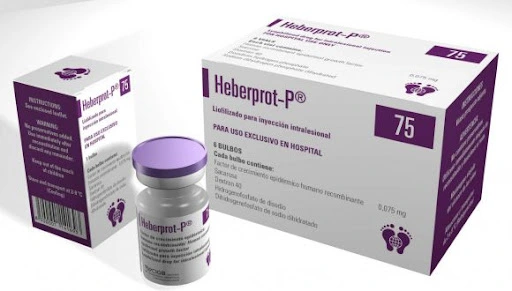Armando González Expósito, second degree specialist in Angiology and Vascular Surgery, who works at Lucía Iñiguez Landín Clinical Hospital, was one of the two participants from Holguín province in the recently concluded 7th International Congress on Integral Management of Ulcers and Complex Wounds. On the occasion, the use of Heberprot-P, the only therapy in the world for the effective healing of neuropathic and ischemic, deep and complex diabetic foot ulcers, was discussed in different institutions both nationally and internationally.
This important event motivated the also Provincial Coordinator of the Program of Comprehensive Attention to the Diabetes Patient in the province of Holguin to share his experiences, both on the event and on the use of the novel Cuban drug in this northeastern territory.
What professional experiences did the 7th International Congress on Comprehensive Management of Ulcers and Complex Wounds bring you?
“In the seventh version of this event related to the management or control of complex ulcers caused by diabetic foot, which is held periodically, precisely to evaluate the results recorded throughout the country and in the other countries where Heberprot-P is applied.
“This medicine has gone through a series of research steps, it has been approved for use in Cuba and in many other countries, and it even has a patent in several countries. It is a novel product and it is the only one of its kind. So far, it is the only one that has proven to be absolutely effective in healing ulcers in a short period of time.
“One of the details that characterize diabetic ulcers is the long time they have to heal and in that period other complications may appear. So it has been shown that it significantly shortens the healing time and also that it prevents the recurrence of other lesions, which is one of the great problems faced by these patients.
“The event was attended by delegates from Cuba and 20 other countries, including the United States of America, Canada, Mexico, the Dominican Republic and Colombia in particular, the latter as the guest of honor, for having a solidity in the use and application of the drug, as the Dominican Republic also has, where its participants made a recognition to the main Cuban scientists who have developed the drug.
“Professionals from countries in Asia, Europe and Italy, in particular, also attended the event and gave several interesting lectures. Another memorable moment was the realization of a symposium on wound healing, between the Cuban side and representatives of U.S. hospitals, specifically, from the Medical College of Wisconsin.
“In the case of the Holguin delegation, it was made up of Elennis Cruz, provincial promoter and at the same time the one who runs the program at Pedro Diaz Coello polyclinic and the speaker, the Provincial Coordinator of the Program of Integral Attention to the patient with the condition of Diabetes.”
“The event was a magnificent moment to meet with colleagues who have been working in this area for many years and also to share with the founders of the specialty in the drug program, with scientists from other institutions such as the Center for Genetic Engineering and Biotechnology (CIGB), with whom we have a magnificent working relationship and that undoubtedly is a fundamental contribution.
“We also updated the state of the art, as we say in the medical specialties, the update, of the latest evidence on the treatment of ulcers, with different surgical and medical techniques and treatments.
“Then it became a magnificent moment to establish a summary of what has been done so far, how much more we can improve, what actions we can do, how much more we can benefit patients, which is our fundamental objective.”
In the particular case of the use of this biotechnological product in Holguin?
“In Holguin this program has been operating since 2007. Every year a group of patients benefit from this program specialized in curing diabetic foot ulcers. The largest number of patients who are treated are, precisely, in Primary Health Care (PHC), in a magnificent interrelation between hospital care which is secondary care and PHC.
“That is to say, first in the hospital procedures are performed on those with more complex lesions, who are then referred to the corresponding health areas. Other patients are detected through screening and consultation promotion activities in the health areas and are treated without the need for them to go to the hospital.”
Why is the treatment of diabetic foot ulcers so complex?
“It so happens that diabetic foot is a concern for health systems and is truly a problem, because it is the leading cause of non-traumatic amputations, i.e., those not related to accidents. Also because of the high mortality associated with these injuries and because of the high demand for health services and the high rate of major amputations. It is even the leading cause of major amputations worldwide, obviously saving those due to traumatic problems.
“So, saving an ulcer, curing an ulcer in this case, is a way of avoiding an amputation and, logically, so that the patient can continue with his working life, or if he cannot do so due to the magnitude of the foot damage, at least he can remain active in some actions that can benefit both him and his family”.
VIDEO: https://youtu.be/CfO5XFqZVlo?t=81
- International Scientific Conference on Neurogenetics - 11 de December de 2025
- 60 years in service to life: A tribute to the Lenin Hospital - 10 de December de 2025
- Renowned UK Scientists to Visit Holguin - 8 de December de 2025

